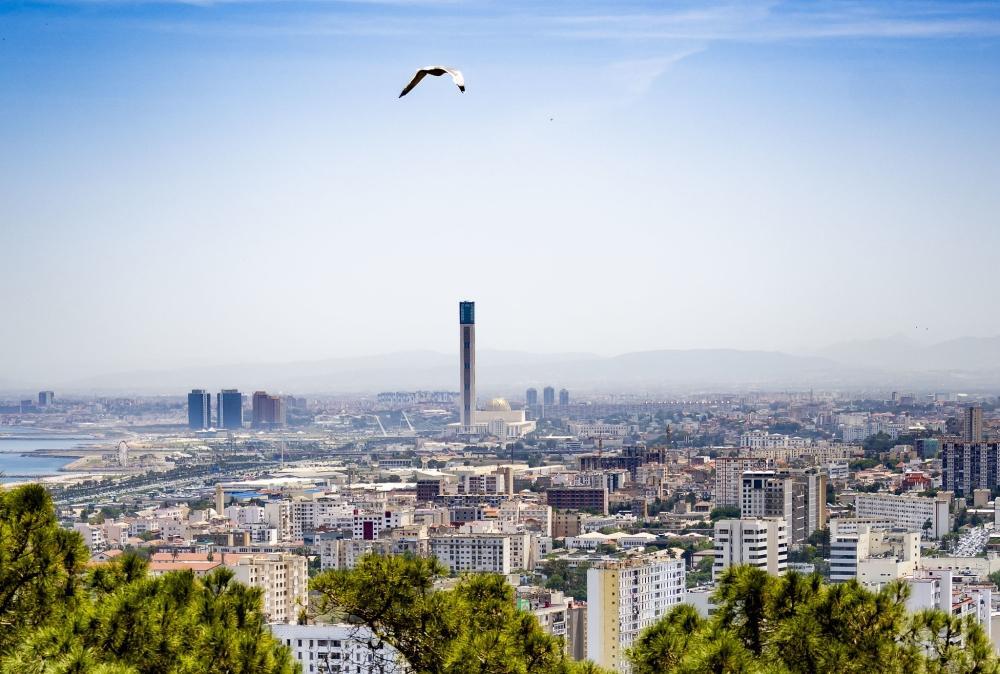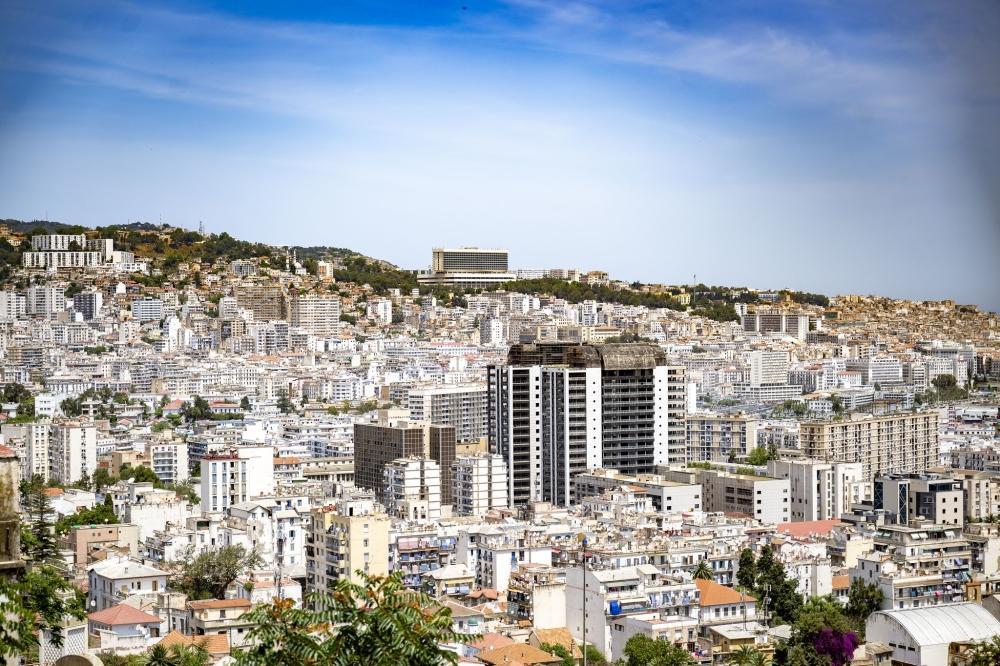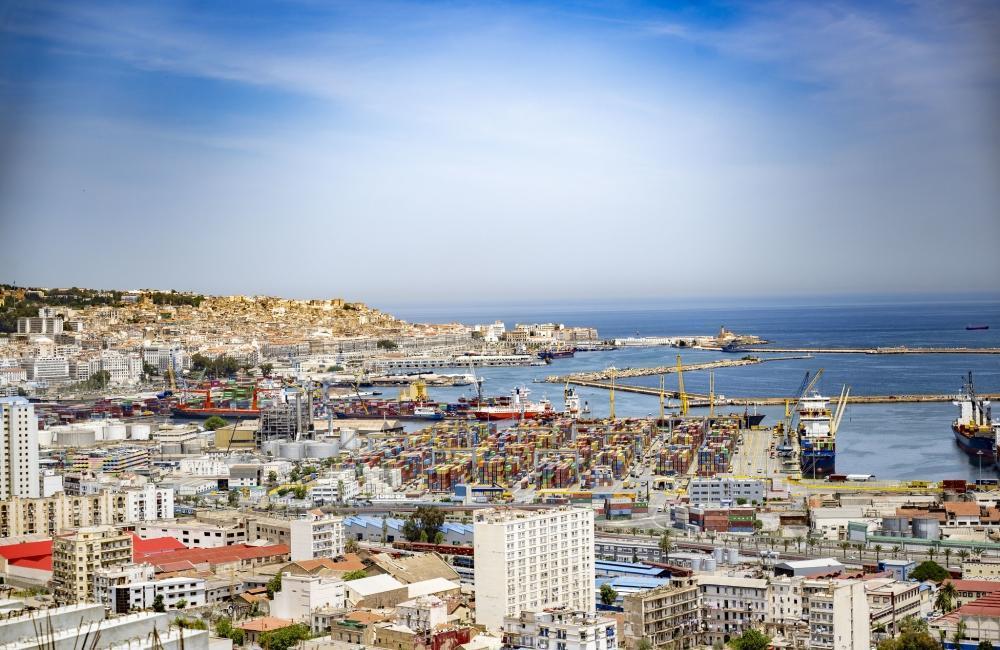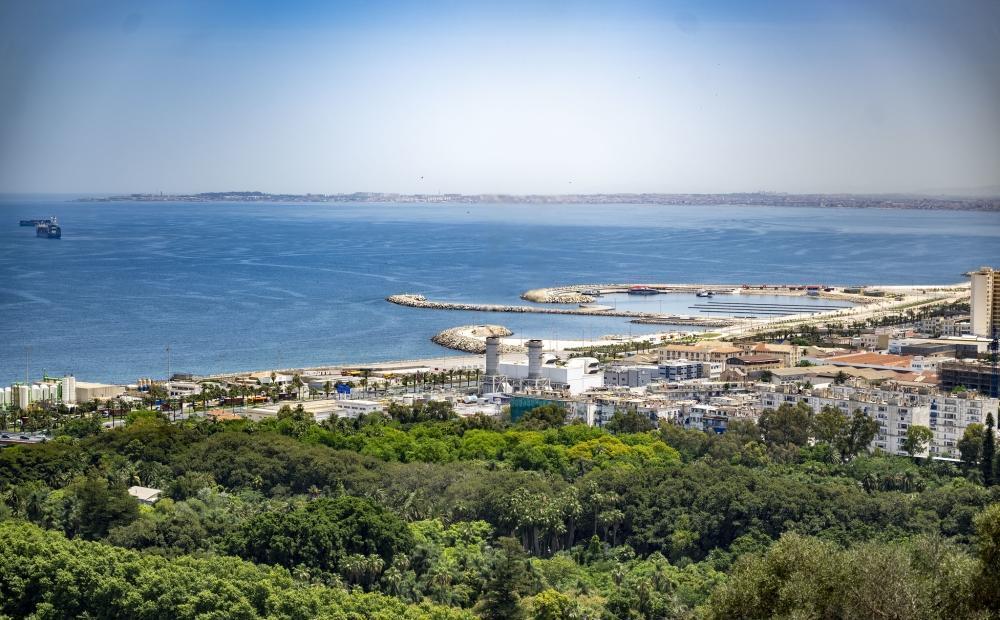Africa-Press – Rwanda. President Paul Kagame, on June 3, arrived in Algiers, the capital of Algeria, for a two-day official visit at the invitation of his counterpart Abdelmadjid Tebboune. While in Algiers, Kagame laid wreath at the Maqam Echahid (Martyrs’ Memorial) in honour of those who lost their lives during the Algerian War of Independence, and visited the National School of Artificial Intelligence (ENSIA) where five Rwandan students are enrolled in programmes specialising in artificial intelligence and data science.
Later, President Kagame and his host, President Tebboune Amadjid, led bilateral discussions with their delegations before witnessing the signing of agreements on air service, visa exemption, communication, police, pharmaceutical industries, higher education, agriculture, entrepreneurship, telecommunication, justice, professional training, and investment promotion.
Upon arrival at the Presidency, President Kagame was welcomed by President @TebbouneAmadjid. The two Heads of State held a tête-à-tête meeting and discussed the importance of intra-Africa cooperation, with a focus on free trade as well as knowledge and skills exchange. They also… pic.twitter.com/jkEPV1z9gB
Here, let’s look at some of the key fascinating facts about Algeria, the tenth-most populous country in Africa, and the 33rd-most populous country in the world.
1. Vast Sahara Desert
Algeria is home to approximately 80% of the Sahara Desert, the largest hot desert in the world and the third-largest desert overall, smaller only than the deserts of Antarctica and the northern Arctic. Extending across most of the northern part of Africa, the Sahara Desert offers stunning sand dunes, ancient oases, and unique wildlife.
Characterized by rocky desert landscapes with an average elevation of over 900 meters (3,000 feet), the Ahaggar Plateau, is a popular destination for adventure travellers, offering opportunities for hiking, climbing, and exploring the desert landscape. Also known as the Hoggar Mountains, the Ahaggar Plateau rises from the barren landscape of the Sahara in southern Algeria. Its highest peak, Mount Tahat, reaches 3,003 meters (9,852 feet).
Home to nomadic Tuareg people for centuries, the Ahaggar region is arid, but there are some oases and wadis – river valleys – where vegetation and some desert species can survive.
2. Djamaa El Djazaïr – The third-largest mosque in the world
The Great Mosque of Algiers, known as Djamaa El Djazaïr, boasts the tallest minaret – a type of tower typically built into or adjacent to mosques, generally used to project the Muslim call to prayer (adhan) from a muezzin, but also serves as landmark and symbol of Islam’s presence – in the world at 265 meters.
Opened in April 2019, Djamaa el Djazaïr stands as a testament to modern Islamic architecture. It is the third-largest mosque in the world after the Great Mosque of Mecca and Al-Masjid an-Nabawi of Medina in Saudi Arabia, according to Wikipedia.
3. Tassili n’Ajjer – Prehistoric rock art
Located in south-eastern Algeria, Tassili n’Ajjer is a mountain range in the Sahara Desert, designated as a UNESCO World Heritage Site in 1982.
It is renowned for its extensive prehistoric rock art, depicting scenes of ancient life and wildlife.
The site spans over 72,000 km2 and is a treasure trove for archaeologists.
4. The fennec fox
The fennec fox, with its large ears and small size, is Algeria’s national animal. Adapted to the harsh desert environment, the small fox native to the deserts of North Africa, ranging from Western Sahara and Mauritania to the Sinai Peninsula, is also the mascot of the national football team, Les Fennecs.
The fennec fox’s most distinctive feature is its unusually large ears, which serve to dissipate heat and listen for underground prey.
The fennec is the smallest fox species.
5. Seven UNESCO World Heritage Sites
Algeria boasts seven UNESCO World Heritage Sites, including the ancient Roman cities of Timgad and Djemila, Tassili n’Ajjer, the M’Zab Valley, and the Kasbah of Algiers, each reflecting the country’s rich historical tapestry. Tipasa, located 70 kilometres west of Algiers, and the Al Qal’a of Beni Hammad, are others.
6. Couscous
Couscous, a staple made from steamed semolina wheat, is Algeria’s national dish.
The steamed grain made from semolina flour (durum wheat flour) is often served with lamb, vegetables, and a rich broth, showcasing the country’s culinary heritage.
7. Rich literary heritage
Algeria has a rich and diverse literary tradition. From the works of Assia Djebar, who vividly captured the struggles and triumphs of Algerian women, to Kateb Yacine, whose Nedjma is a foundation stone of modern Maghrebi literature, Algeria has no shortage of authors who deserve the spotlight.
Assia Djebar’s Women of Algiers in Their Apartment (1980) is a collection of short stories that vividly portrays the lives of Algerian women. Nedjma by Kateb Yacine (1956) is a philosophical exploration of identity, colonialism, and resistance. Yacine’s novel follows four young men — Lakhdar, Mustapha, Rachid, and Mourad — whose lives are intertwined with the enigmatic Nedjma, a woman symbolizing Algeria itself: beautiful, elusive, and deeply connected to the country’s history.
Mouloud Feraoun’s The Poor Man’s Son (1950), is a semi-autobiographical novel that captures the struggles of growing up in a poor Kabyle family under French colonial rule in Algeria. The novel offers a poignant portrayal of rural life in the harsh mountainous regions of Kabylia. The story follows the protagonist, Fouroulou Menrad, as he navigates the challenges of poverty, tradition, and the limitations imposed by colonialism. Despite his difficult circumstances, Fouroulou dreams of education and personal growth, viewing knowledge as a path to self-liberation.
Mohammed Dib’s The Algerian Trilogy, composed of La Grande Maison (1952), L’Incendie (1954), and Le Métier à Tisser (1957), is a foundational work of Algerian literature that vividly portrays the struggles of ordinary Algerians under French colonial rule. Following the life of Omar, a young boy growing up in a poor family, as he witnesses the deep inequalities and hardships faced by his community, the trilogy is a touching and unflinching depiction of life in the working-class neighborhoods and rural areas of Algeria in the 1930s and 1940s.
And, Nobel Prize-winning author Albert Camus was born in Algeria in 1913. The French philosopher, author, dramatist, journalist, and political activist, was the recipient of the 1957 Nobel Prize in Literature at the age of 44, the second-youngest recipient in history.
8. Oil and gas reserves
Though it is charting a course toward economic diversification, Algeria’s economy is heavily reliant on oil and gas, accounting for a significant portion of its exports and GDP. The country is a significant player in the global energy market, possessing the second-largest oil reserves in Africa and being a major exporter of natural gas, particularly to Europe.
According to the World Bank, Algeria is diversifying its economy, tripling non-hydrocarbon exports since 2017 to $5.1 billion in 2023, thus reducing its reliance on oil and gas.
9. Extensive tourism potential
With more than 1,600 kilometres of Mediterranean coastline, important cultural and historical sites, and the striking desert landscapes of the Sahara, Africa’s largest country holds extensive potential for tourism. Algeria’s blend of ancient history, diverse cultures, and natural wonders makes it a unique destination for travellers and a fascinating subject for study.
Among others, the country hosts important Roman, Islamic, and Christian historic sites, seven of which are included on the country’s UNESCO World Heritage list, including the Roman cities of Tipaza and Timgad, and the Casbah of Algiers.
10. Maqam Echahid – The Martyrs’ Memorial
A visit to the Martyrs’ Memorial, or Maqam Echahid, is a must-do while in Algeria. With profound significance and stunning architecture, the Maqam Echahid is a concrete monument commemorating the Algerian War. During his visit, President Kagame laid a wreath at the Maqam Echahid in Algiers, paying tribute to the heroes who sacrificed their lives during the Algerian War of Independence.
The monument was opened on July 5, 1982, on the 20th anniversary of Algeria’s independence. It is fashioned in the shape of three standing palm leaves, which shelter the “Eternal Flame” under it.
Consisting of three stylized fins that join mid-height, the concrete monument built by the Canadian company Lavalin, based on a model produced in the Fine Art Institute of Algiers, under the leadership of Bashir Yelles, reaches a height of 92 metres (302 ft).
For More News And Analysis About Rwanda Follow Africa-Press









